A story by Job van Eijk
“Maassluis – Tugboat Port” is the title of the latest exhibition by the Dutch National Towage Museum. It will run until 19 October, 2014. But how did Maassluis come to earn that title?
On 16 May, 1614, an ‘Act of Separation’ was signed. This year, the city of Maassluis, The Netherlands, thus will have been on the map for exactly 400 years. The story, however, begins much earlier, in the 1100s. At the time, the entrance to - then - River Merwede was a very wide one, including much of what is now known as the Westland area as well as Europort. In fact, the city of Vlaardingen was the then most western village on the banks of the River Merwede.
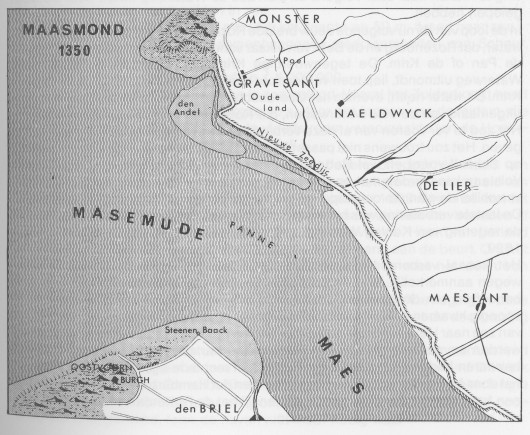
As the land was lying low and partly tidal, an extensive array of dikes and dams was built to keep what was in fact the North Sea in check. Between 1134 and 1164 a number of large floods devastated part of these works. A dedicated effort was made to remedy this situation and around 1260 a large dike was finally completed closing off the lower lying grounds from high tides. To get rid of excess water waterways were dug which spilled in the river by means of controllable gates. These waterways were dug to the order of the individual villages. No less than 13 such ‘locks’ were constructed in what was then known as the Maas Dike. The Noordvliet and Zuidvliet were dug by the neighbouring villages of Monster and Wateringen and – as they were within spitting distance of each other, the gate keepers became the first permanent inhabitants of what was then known as Maeslantsluys (‘sluys’ translates as ‘locks’).
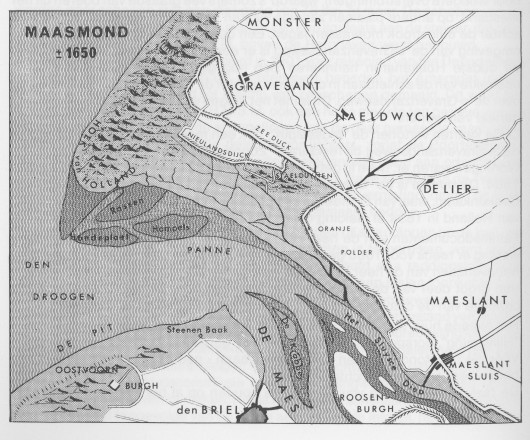
Outside the locks a fishing port developed which brought prosperity due to its supporting industries like shipbuilding, shiprepair, rope-making, etc. Since Maeslantsluys was a part of the village of Maasland – a farmer’s community - all taxes went into the coffers of the latter with little coming back. A campaign was started to become independent which succeeded in 1614.
It would take another 250 years for the first tugs to arrive in the port. The reason for this was the fairway from Rotterdam to sea. Around 1740 the shortest way was via the Brielse Maas. The distance to Rotterdam was some 35 kilometers but this fairway was unreliable with constantly shifting bottom and a lot of silting up – sometimes only 2,5 meter of water was available. Larger ships were forced to take the 95-kilometer route via the Goereesche Gat, Haringvliet, Hollands Diep, Dordtse Kil and Oude Maas.
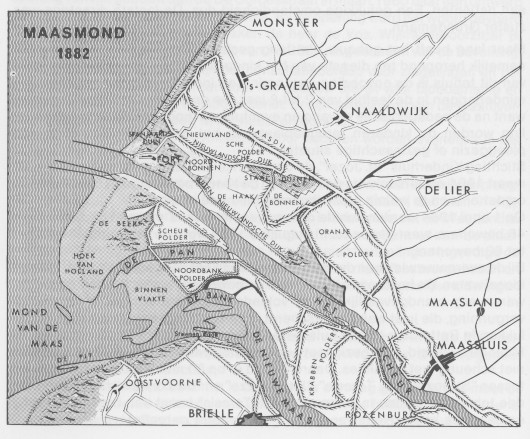
In 1830 King Willem I had the Voornse Canal built which shortened the long route to 40 kilometer. Soon, however, this channel became too narrow. The ships became bigger all the time and the early steamers even had to be routed over 135 kilometer via the Easter Scheldt In order to become more competitive a short and reliable route to the North Sea had to be found. As early as 1739 alternative routes had been thought of but impractical at the time due to construction problems. Finally, a plan by the engineer Pieter Caland was accepted and on 23 March, 1864, the first sand was moved. The plan was to dig a fairway from the Scheur (near Maassluis) through the dunes at the Hook of Holland. This shortened the route to Rotterdam to just 30 kilometers. In September, 1869, the first fishing vessels used the direct route to sea. On 9 March, 1871, the first seagoing steamer – Richard Young, a Cross-Channel steamer – sailed the New Rotterdam Waterway.
The tugboat era
At that time, the Pilotage Service was transferred to the port of Maassluis which was closest to the sea (the port of Hoek van Holland while closer was a small government-owned port intended for work vessels only). Another service-provider to establish itself at Maassluis was the Alblasserdam-based tugboat operator L. Smit & Co. Established in 1842 as the Sleepdienst Fop Smit, their tugs were first stationed in Maassluis in 1869, anticipating demand and strategically locating their tugs midway between Rotterdam and the sea. The first tug to be stationed at Maassluis was their paddle tug Zierikzee. This was the start of Maassluis as a tugboat port.
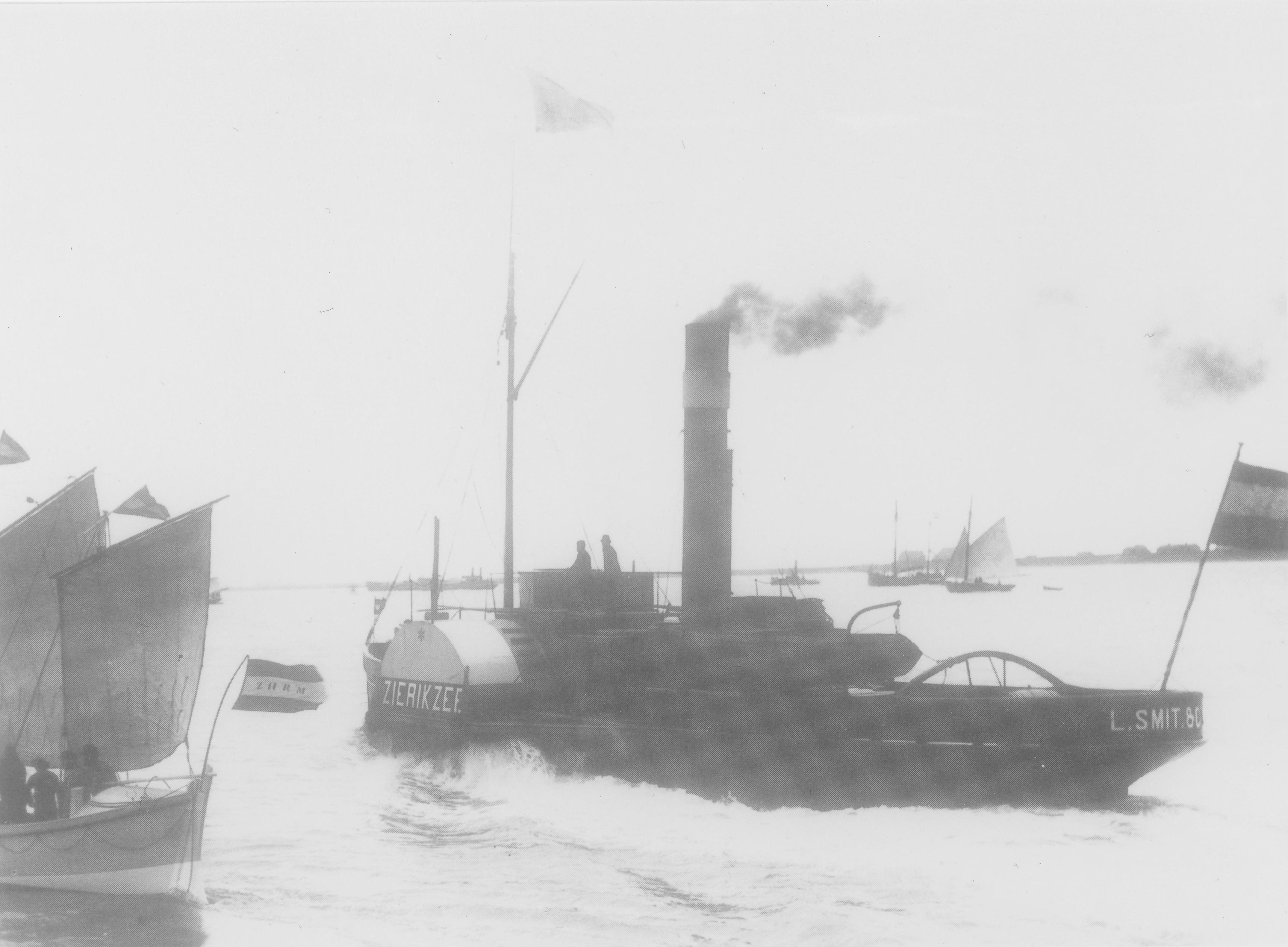 Zierikzee - the first Smit tug operating from Maassluis Zierikzee - the first Smit tug operating from Maassluis |
It had been expected that the Rotterdam Waterway itself would maintain depth in the fairway. This was a miscalculation and dredging was a necessity. It was the invention of the suction hopper dredger that made large-scale dredging possible. In the meantime ships frequently ran aground. The big liner companies therefore stimulated the construction of powerful tugs to assist their ships. It was for this reason that more powerful seagoing tugs were stationed at Maassluis which from then on remained the base for Smit’s sea- and oceangoing tugs. In 1880 Smit had opened a small maintenance and repair shop at Maassluis which in 1892 was extended with an office building.
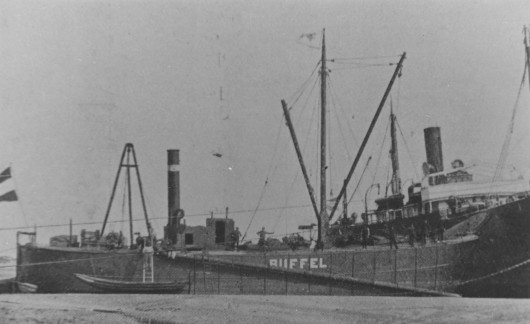 The Bergings Maatschappij operated dedicated salvage vessels like BUFFEL - photo coll. Job van Eijk
The Bergings Maatschappij operated dedicated salvage vessels like BUFFEL - photo coll. Job van Eijk
The frequent groundings attracted other players and in 1887 the Berging Maatschappij (Salvage Company) was established by Dirkzwager, a Maassluis-based shipping agent. The company had a number of dedicated salvage vessels built. Tugs, however, were hired from local operators. The company was established with support from the big liner companies for exactly the same reason they supported Smit’s tugs. So when the Waterway was deepened sufficiently, there was insufficient need for the salvage fleet. At that point, the company extended its operations beyond the Waterway area..
The Rotterdam Waterway was not the sole domain of L. Smit & Co. In 1897 the Sleepdienst Hoek van Holland was established. In 1899 this company also established a small repair workshop at Maassluis.
Earlier, in 1893, Sleepdienst Vuyk was established with support of the Rotterdam-based American Petroleum Co. In 1900 the company was absorbed in the newly established Internationale Sleepdienst Maatschappij (International Towage Co.) which was effectively Vuyk with another shareholder and a wider ambition. The ISM came in direct competition with L. Smit and set up operations at Maassluiis and various other ports in the Rotterdam – Hoek van Holland area. The ISM was very active and well-connected. In 1901 it purchased the earlier mentioned Sleepdienst Hoek van Holland. With this transaction it also gained the workshop in Maassluis. ISM also entered into a full-blown competition at Amsterdam, but here it failed. A more successful venture were the excursion boats to Hoek van Holland and Scheveningen.
In 1907 a Swedish salvage steamer was stationed at Maassluis. Operated by the Swedish Neptun company the venture was short-lived and Belos quickly disappeared to more lucrative areas.
- Smit & Co. was also active in salvage. From 1898 to 1902 they had an agreement with the Bergings Maatschappij for joint operations on the Waterway and the Dutch coast. This contract was ended in 1902 when Smit started a co-operation with van den Tak which later would become a household name in the salvage industry: Taks Berging, Takmarine, Smit-Tak. The Tak name would remain in Maassluis until 2004 when the salvage stores where transferred to Rotterdam.
In 1923 the decision was taken to merge the operations of L. Smit & Co. and the Interantionale Sleepdienst Maatschappij into L. Smit & Co’s Internationale Sleepdienst (L. Smit & Co’s International Towage Co.). The constituent companies remained independent for a great many years but to all intents and purposes it had become a single company. Although the headquarters would be in Rotterdam, the deepsea and salvage fleet was to remain based at Maassluis. At the same time Dirkzwagers Bergings Maatschappij was dissolved, with the fleet and equipment taken over by the new company. From that time on, the ocean tugs would carry a blue band around their funnel and being named after rivers, seas and oceans while the harbour fleet would sport a red band.
The company had the largest fleet of dedicated oceangoing tugs in the world. At the time of the ‘merger’ the combined fleet totalled 59 tugs, amongst which 16 oceangoing tugs. At the start of WW II the oceangoing fleet consisted of 21 tugs. In 1946 10 were left. By 1960 the fleet numbered 20 oceangoing tugs. In 1963 the fleet totalled 28 but from then on the numbers went down in addition to a number of vessels being stationed in the Far East.
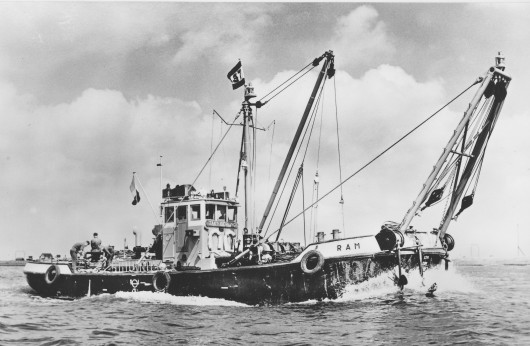
The 1963-built Zwarte Zee (9.000 hp) was the first in the Smit fleet which was too large for the port of Maassluis. As larger units entered the fleet and older units disposed of, the activities in the tugboat port gradually slowed down – as far as tugs is concerned. The last Smit oceangoing tugs to leave the port were Thames in 1979 and Schelde in 1980.
Historic awareness
In the mid-1970s a number of initiatives were taken which were to lead to a renewed interest – by a wider audience – in the towage business. In 1974, the Lekko Society was established with its seat formally at Maassluis. It’s aim was to unite worldwide people with an interest in tugs and towage. A magazine was started, tug visits were made, meetings were held. In 1978 a private initiative was taken to convert the old city hall – dating from 1676 – into a towage museum. The municipality of Maassluis supported this initiative, as well as a number of the Dutch towage companies and the Lekko Society. The Dutch National Towage Museum is situated on the inner harbour of Maassluis and regularly presents themed exhibitions, in addition to the permanent expo.
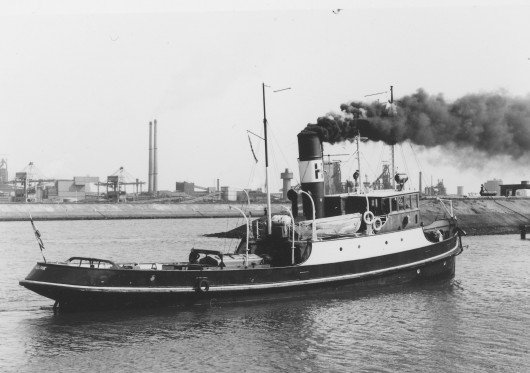
HOLMVIK arriving at IJmuiden from Sweden to become the star of the Dutch television series Hollands Glorie (Dutch Glory) based on the famous book by Jan de Hartog - photo coll Job van Eijk
Around the same time a television series ‘Hollands Glorie’ (Dutch Glory, based on the famous book by Jan de Hartog) was screened. The tug which was used in this series was actually a Dutch-built seagoing tug dating from 1916, located in Sweden with the help of the Lekko Society. Destined to be scrapped after the series was shot the tug was rescued from this fate and restored to its former glory. The fully operational tug was brought to Maassluis and is now moored behind the Towage Museum. She is also the core of the annual Furiade Festival, which also attracts a lot of tugs to the port. Not only small ones, but big – preserved - ocean tugs now also form part of the festivities.
The port of Maassluis remained active and even some of Smit’s shiphandling tugs were stationed at the port though they have since disappeared again. Other (non-tug) operators have taken their place. Tugs, however, kept visiting the port. This was due to the Shipyard De Haas which over the years has earned the title of ‘hospital of the port of Rotterdam’ because an endless streamof port support vessels is being maintained and repaired at the last remaining Maassluis’ shipyard. The yard dates from 1879 when Hendrik de Haas started the yard ‘Zorg & Vlijt’.
The yard, which is still owned by the De Haas family also built quite a lot of tugs. In 1948 the tug Maassluis was completed for account of L. Smit & Co’s Internationale Sleepdienst. This little harbour tug was the only one in the fleet to carry the blue-on-black funnel of the oceangoing tugs. She was stationed at Maassluis to assist the big tugs. Today, this tug is back again in Maassluis and fully restored to her 1948 looks. Owner is mr Luuk Vroombout, director of Alphatron, a marine electronics firm. Mr Vroombout also initiated the Maassluis – Tugboat Port plan which aimed to revive the outer port as a working museum.
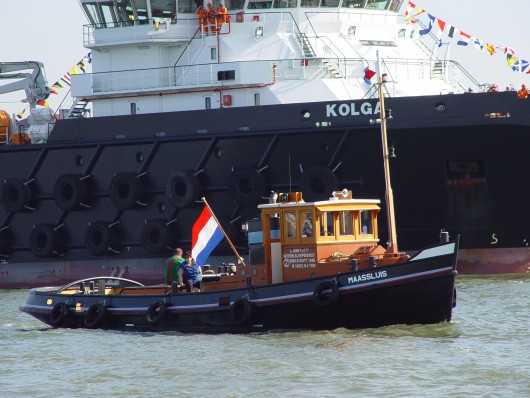 The tug MAASSLUIS fully restored. Dwarfed by one of the biggest tugs in the world, Heerema's KOLGA, she is now owned privately and part of Maassluis Tugboat Port
The tug MAASSLUIS fully restored. Dwarfed by one of the biggest tugs in the world, Heerema's KOLGA, she is now owned privately and part of Maassluis Tugboat Port
In 2005, several tugboat preservation attempts were running. Preservation of the tug Hudson - the pre-war prototype of a new design for Smit’s oceangoing tugs – had already been accomplished with the tugs new function being a floating – and transportable – museum on the Dutch merchant navy in World War II. The far bigger post-war Elbe – at the time of delivery one of the most powerful tugs in the world – was in the process of being restored to a fully operational vessel. This tug was to be moored in the outer harbour. At about the same time the Taksberging salvage vessel Bruinvisch – representing the series of pre- and post-war salvage vessels based on the ‘blazer’ type of fishing vessel – was returned to Maassluis for preservation. It seemed a good idea to facilitate these efforts and combine this into a working historical port operation. Not only to exhibit but also to maintain old-fashioned workmanship and shipbuilding- and repair skills.
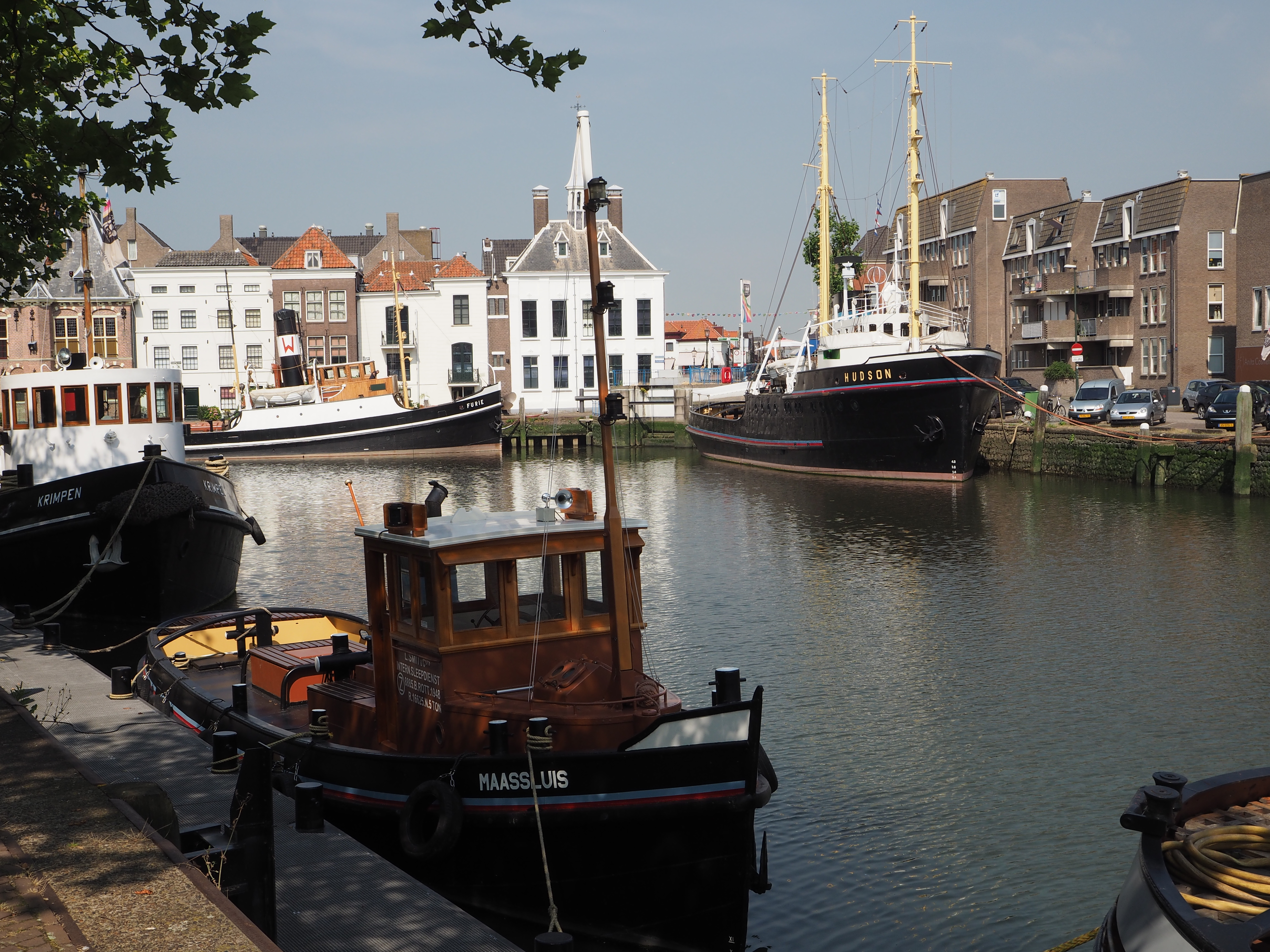
Another tug – privately owned – is the Krimpen, an immediate post-war shiphandling tug. A large series of this type was built for account of Smit; partly by shipyard De Haas. She is usually moored in the inner harbour. Another tug frequently in port is the Adriaan, a fully operational tug formally owned by Kooren but no longer on the active list.
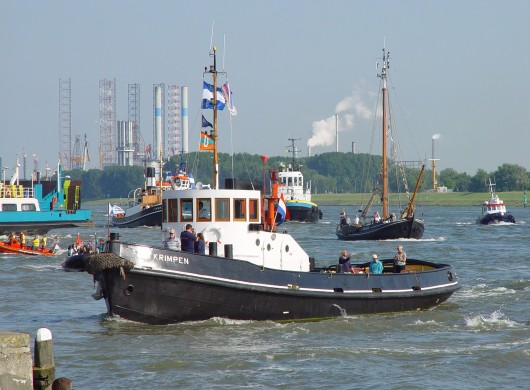 KRIMPEN in 2014 - photo Job van EIjk (TugDoc International)
KRIMPEN in 2014 - photo Job van EIjk (TugDoc International)
Apart from the preserved tugs there are two towage operators still active. Sleepbedrijf H.J. Wesselius started in 1951 as a fuel dock located in the inner port of Maassluis. Soon, a tugboat service was also provided. A tug currently operated by Wesselius is Mehari. This tug was built in 1969 by Shipyard De Haas as one of a series of four near identical vessels. Built for the dredging form of Oosterwaal the tug returned to Maassluis in 1979 when she was acquired bij Rederij Waterweg. This company had been established in 1970 by Henk de Haas. The tug Jil was built for his own account by the family-owned shipyard. To run this independently from the yard Rederij Waterweg was founded. In December 1985 Henk de Haas left the yard to concentrate solely on towing. The company shifted to Workum in 1986. The tugs, however, had meanwhile been stationed in Den Helder which at the time had no significant tugs apart from the naval tugs, which did not operate in the commercial port. Rederij Waterweg today is known as Acta Marine and still going strong, although no longer owned by De Haas.
Incidentally, Henk de Haas was also instrumental in saving the Furie, mentioned earlier. For this purpose the Hollands Glorie Foundation was established in 1977.
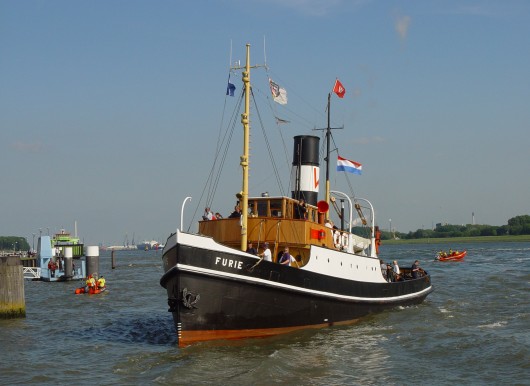 FURIE, ex HOLMVIK, at the Day of OCean Towage 2014 at Maassluis - photo Job van Eijk (TugDoc International)
FURIE, ex HOLMVIK, at the Day of OCean Towage 2014 at Maassluis - photo Job van Eijk (TugDoc International)
The latest tug operator to be established at Maassluis is a subsidiary of Gareloch Support Services, based in Scotland. It started in 2011 with the acquisition of a Eurocarrier followed in 2011 by the Damen Shoalbuster 3209 type tug Liz F, 3.500 bhp and a bollard pull of nearly 50 tonnes. Registry: Maassluis. The most powerful tug operating from Maassluis ever and at the same time the only seagoing tug ever homeported at Maassluis – the Smit tugs always had Rotterdam on the stern.
This brings the story to where it started – the exhibition in the National Towage Museum. The exhibition was officially opened by Mr Govert de Haas, current director of shipyard De Haas. He did so by ringing the ship’s bell at the entrance to the museum.
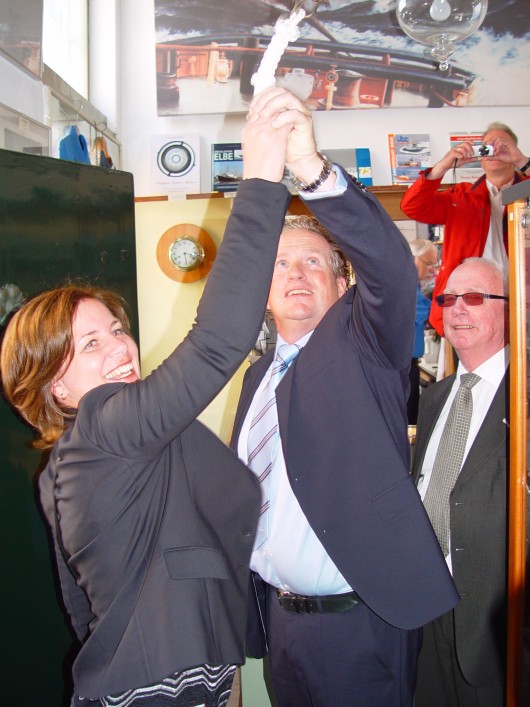
This is the original bell of the first tug named Zwarte Zee, completed in 1898. The tug was sold to Russia in 1905 which was the start of a long journey in the Pacific area until the tug ended up with owners in Hong Kong. Active until 1947 the bell disappeared until it was spotted by a Dutch seaman somewhere in the mid-1980’s. And now forms part of the collection of the museum.
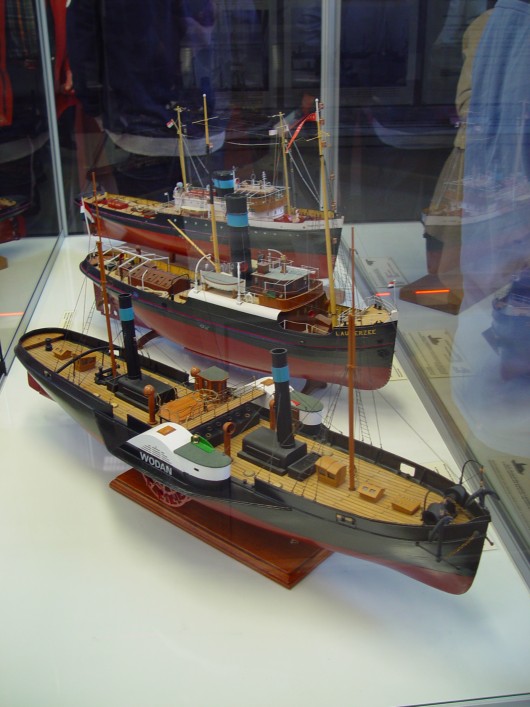
After the successful official opening the impressive exhibition could be visited. The photographs rang a lot of memory bells with the invited, amongst which management of a number of Dutch tug operators.
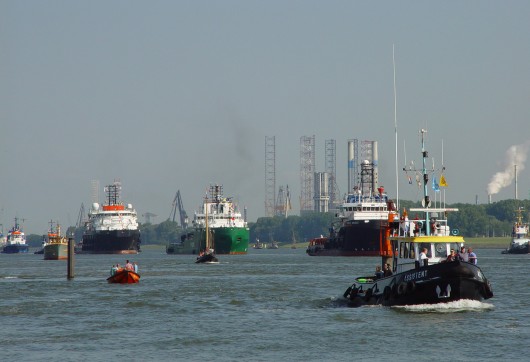
To round off the week two days later, at the time of the ‘Day of Ocean Towage’, the 400-year Maassluis festivities were started with a sail-past of numerous vessels which had or have a connection with Maassluis: inland waters vessels, fishing vessels, coasters various types of sailing ships, pilot boats and a lot of tugs. Fortunately, on that day a number of foreign tugs were also in port and the owners agreed to participate in the event showing the crowds some of the biggest tugs in the world.
Sources: - Rotterdam 650 jaar – various authors; De Nieuwe Waterweg – Gerrit vd Burg; Maassluis-Sleepboothaven – exhibition guide, Bergers van het eerste uur (Dirkzwager) – J.P.A. Verkley; Smit 150 – G.J. de Boer; Along coastlines and shallow waters (Rederij Waterweg 1970-2006) – Paul Schaap.
Note: this article is copyright TugDoc International / Job van Eijk and was earlier published in Lekk International 208, August 2014.


